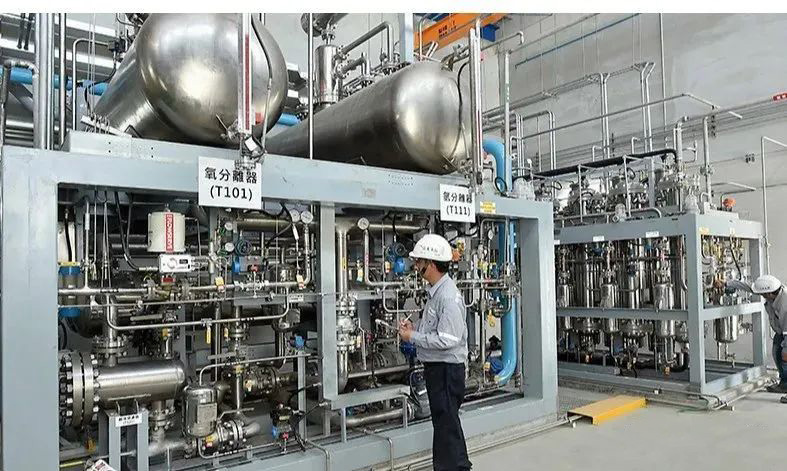The demand for high-purity hydrogen for semiconductor extreme ultraviolet (EUV) processes has increased dramatically. Taiwan, China is also exploring the possibility of waste hydrogen recycling as an industry.
For Taiwan’s semiconductor industry. TSMC and other players have declared that they have joined the RE100 initiative, committing to 100% renewable energy use by 2050. In addition, TSMC has introduced a large number of ASML’s EUV machines, and the demand for high-purity hydrogen has increased. For example, ASML’s NXE 3 series uses 25Nm3/hr of hydrogen, and the NXE 5 series uses 40Nm3/hr.

Under the net-zero trend, the International Energy Agency (IEA) announced that there are already thousands of hydrogen energy development programs around the world. Due to the inconvenience of transporting hydrogen and safety concerns, local manufacturing will be the main trend in the future. However, the electricity consumption and cost of producing green hydrogen from green electricity is considerable.
Until new low-cost hydrogen production technologies mature in the academic world. The Technology Division of the Ministry of Economic Affairs has commissioned the Materials and Chemical Research Institute of the Industrial Technology Research Institute (ITRI) to invest in research on the feasibility of waste hydrogen recycling. If it can take into account the needs of net-zero environmental protection and semiconductor factories. It may develop into a new industry in Taiwan, China.
Production of green hydrogen
Green hydrogen is produced by adding expensive platinum and iridium as catalysts in an electrolyzer and applying extremely high voltage to electrolyze water into hydrogen and oxygen. The average power consumption of electrolytic hydrogen production is as high as 5.7kWh/Nm3H2 or 64kWh/kgH2. The failure of the EUV in Taiwan to meet the demand for pure hydrogen will inevitably affect semiconductor manufacturers’ capacity expansion.
With funding support from the Ministry of Economic Affairs. ITRI’s Institute of Materials and Chemical Engineering is introducing a validation program designed to meet the specifications of the Semiconductor Industry Association International (SEMI). It developing a low-proton conductive impedance unit structure. It improve the performance of the purification unit. And ultimately developing a high-purity hydrogen recovery and purification technology in order to recycle and reuse high-value hydrogen.
According to the relevant plan, ITRI’s development of high-throughput electrochemical hydrogen purification technology. If successful, in addition to breakthroughs in the existing high-cost, high-energy-consuming process technology, reduce system operating costs. But also help to establish Taiwan’s own waste hydrogen recycling industry clusters. And it continue to expand the application of the market for other industrial waste hydrogen recycling. It expanding the reduction of carbon emissions and other benefits.
The Max Planck Institutes in Germany, together with the Synchrotron Radiation Research Center in Taiwan and the National Yang Ming University of Transportation. Who have found a method of hydrogen production thats can significantly reduce the energy consumption of electrolysis. And the cost of the catalyst is only one ten-thousandth of the cost. Using copper-based oxide catalysts instead of platinum and iridium, hydrogen can be produced by electrolysis at low voltage. The experiment also revealed that trivalent copper has a special role in electrochemical catalysis.